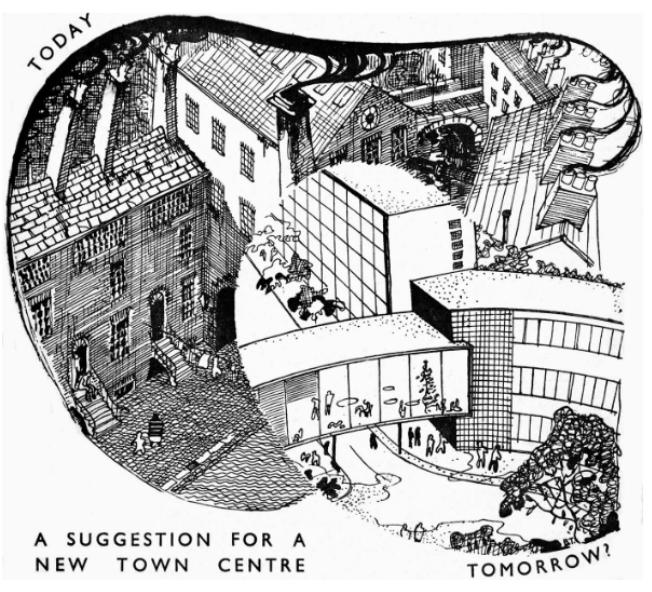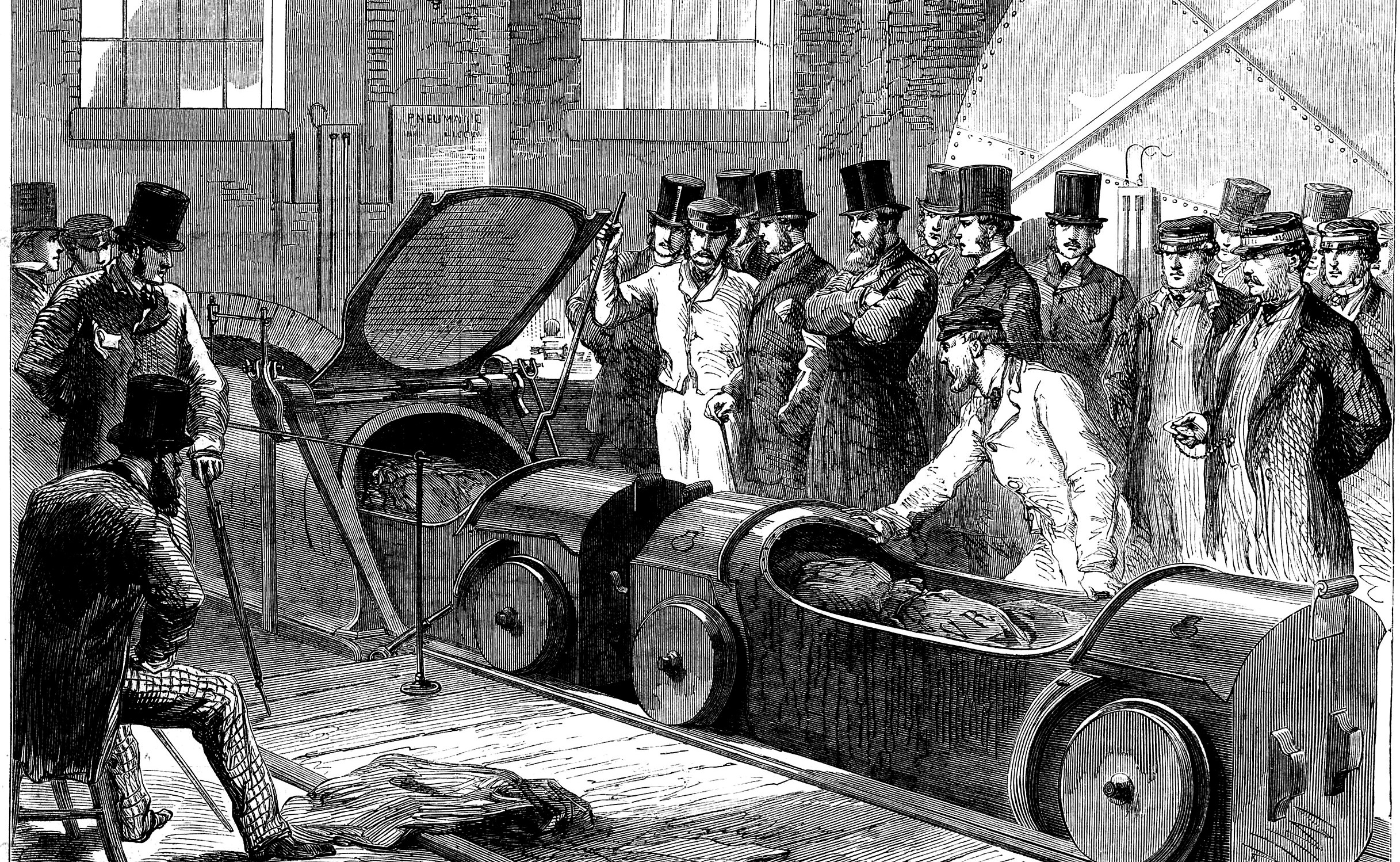Radical Conservative Possibilities
Blue Jerusalem: British Conservatism, Winston Churchill, and the Second World War
by Kit Kowol
Oxford University Press, 2024, 352 pages, $63.95
This intriguing book should appeal to those interested in British military, political, and cultural history, as well as those concerned with the very considerable philosophical and political possibilities of conservatism, both as they existed during the Second World War era and as they exist now.
This latter dimension of Kit Kowol’s well-written and scholarly study is of great interest, dealing as it does with Britain’s lesser-known role in the mid-century efflorescence in conservative thinking, an episode hitherto mainly associated with the work of various figures in the United States (but also found in Australia, as in the work of James McAuley, founding editor of Quadrant).
It is also a revolutionary book, challenging the dominant left-wing accounts of Britain’s experience in the Second World War, including the desperate attempts to appease Hitler before the Nazi invasion of Poland made war inevitable, Churchill’s consequent ascension to the Prime Ministership, the intense debates about how best the conflict should be waged, what the war aims should be, and what a future Britain should look like. Meanwhile, memories loomed of the catastrophic Great War and the sacrifices it demanded, sacrifices which, if called forth once again, would mandate the construction upon victory of a radically new Britain—a “New Jerusalem” as the Labour Party promised, invoking William Blake and Sir Hubert Parry, or a “Blue Jerusalem” if the competing idealists amongst the Conservative Party had had their way, as Kowol punningly suggests.
From a perspective of some eighty years it is possible to misunderstand or underestimate the intensity of the fears—but also the hopes and aspirations—of the British people as they faced up to another colossal existential challenge, less than a full generation after what, it was now suddenly clear, had only been the first world war.
Indeed, dread was the dominant feeling as war arrived, not the euphoria that marked the outbreak of the earlier conflagration, a dread exemplified by the fear of the mass bombing of cities, not only by high explosives as demonstrated infamously in Guernica during the Spanish Civil War but, even more unnervingly, by poison gas, as depicted with chilling realism by H.G. Wells in his novel The Shape of Things to Come (1933), and then vividly portrayed in its blockbuster film adaptation, Things to Come (1936). Tens of millions of gas masks were hurriedly produced and the entire population was expected to carry them around with them in little boxes, ready for the attacks. Many city dwellers were also provided with pre-fab corrugated steel bomb shelters that they could assemble and bury in their yards. Sandbags were everywhere and a complete blackout was imposed. Food shortages threatened and domestic pets were destroyed in huge numbers (threatening a plague of vermin). Work hours increased phenomenally, absenteeism almost disappeared, as did holidays, and productivity soared. Tens of thousands of city children were transported into the countryside to be fostered, often with middle-class rural families rendered aghast at the habits of their young guests.
Then came the military setbacks, first with the failure of the Narvik campaign in Norway, then with the near catastrophe at Dunkirk (adroitly turned into a propaganda triumph of British pluck), followed by the Blitz and the intensive bombing of London and other cities. Londoners struggled to work as sudden death threatened, perhaps after some fitful sleep in air-raid shelters or in the Underground. Altogether, some 60,000 civilians were killed and many more injured during this relentless Nazi campaign, a fact ignored or downplayed by revisionists who eagerly condemn the Allied obliteration of German cities.
Such febrile times create potentially revolutionary situations, as demonstrated by the experience in Russia, Germany, Hungary, and elsewhere during the Great War. Suddenly, amongst all the fear, turmoil, and mass mobilisation, it seemed opportunities might exist for a comprehensive re-shaping of society. This was quickly recognised by the Communist Party of Great Britain (CPGB), which immediately began to promote the notion of a “People’s War” in which Britain would mobilise its own people and the people of its empire—100,000,000 Military Allies, If We Choose, as one radical pamphlet put it in 1940—to first vanquish Nazism and Fascism, before joining with the Soviet Union to create a new global socialist order. In a similar vein, Francis Williams’s War by Revolution (1940) denounced a “generals’ war” and a “public school war”, declaring that true victory would only come when the British masses united with their comrades in Europe to conduct a “democratic revolution of the People against tyranny everywhere”.
As Kowol recounts, People’s War advocates like George Orwell insisted that a democratic people’s army was required, perhaps modelled on a romanticised version of the Republican forces in the Spanish Civil War, and one very different from the professional military who actually conducted the war, portrayed as a backward imperialist army run by an upper-class elite of old Etonians. Rather than loyalty to regiment, crown, and empire, this new citizens’ militia would be united by a shared commitment to a radical democratic creed preaching equality and social justice at home and abroad. Fortunately, the Labour Party leadership, which participated in Churchill’s National Coalition government, resisted such adventurism, arguing that it’s very difficult to engage in total warfare and carry out a social revolution at the same time. Nevertheless, it became conventional wisdom on the Left—promoted by books like Angus Calder’s People’s War (1969) and Paul Addison’s The Road to 1945 (1975)—to lament Labour’s failure to take advantage of the emerging popular radicalism during the war to press forward with the total transformation of British social, political, and economic life.
Ironically, as Kowol also observes, the proposed People’s War, based on the mass mobilisation of the British working-class, would have consumed many more proletarian lives than the hi-tech “liberal militarist” form of warfare, based primarily on naval superiority and air power, that was actually pursued by the War Cabinet and the military, right up until Stalin’s demands for a “second front” in Western Europe could no longer be evaded and the D-Day invasion was launched. However, this reality didn’t faze the CPGB and others on the revolutionary Left, for whom the sacrifice of the present generation for the sake of a utopian future was an acceptable price to pay. Blue Jerusalem does a great deal to deconstruct this myth of the People’s War, and the hitherto dominant left-wing historical narrative that goes with it.
But the book’s strengths are far more than just negative, with its comprehensive critique of conventional historical wisdom. This is because the war created a revolutionary situation not just for the Left, but also for the Right, where a wide range of possible “future Britains” were conjured up by innovative thinkers across the spectrum of conservative thought, and it is here that the greatest significance of Blue Jerusalem lies. Many of these post-war scenarios were quite utopian, but they were also much more diverse and radical that the “one-size-fits-all” socialist utopia promoted on the Left by the CPGB, large parts of the Labour Party, and independent socialists and intellectuals like Orwell and J.B. Priestley.
Kowol explores a range of these conservative visions for post-war Britain, promoted by activists, intellectuals, idealists, parliamentarians, cabinet ministers, industrialists, land owners, and bankers.
These scenarios ranged from a new world-leading, hi-tech industrial Britain, through to the reconstruction of the nation as a predominantly rural society along Merrie England lines, complete with a refurbished land-owning aristocracy, but they also encompassed laissez-faire free trade on one hand and imperial preference protectionism on the other. Also present were various conceptions of a corporatist society where industry, unions, and the state co-operated to achieve ambitious plans to maximise productivity, while optimising profits, wage and salary levels, along with wide-ranging social benefits and entitlements, especially, in wartime, for service personnel. Other conservatives found such notions repellent, preferring a radical individualism anchored in the libertarian critique of government bureaucracy and interventionism, excessive taxation, and creeping restrictions on personal liberty (at one point F.A. Hayek’s famous 1944 libertarian manifesto The Road to Serfdom became a major political issue). Prevalent in most proposals was an intense concern with the British Empire, conceived in paternalistic terms as a means of advancing the economic and civilisational level of all its citizens under British leadership, while serving also as a global bulwark against the totalitarian threat manifested by Nazism and communism.
One of the most prominent visions for reconstruction followed from the conviction that the initial military setbacks in the war reflected a paucity of martial values in British society and an excessive involvement in military affairs of left-wing politicians, civil servants, unionists, pacifists, and other civilians. It was pointed out that it was not really a civil armada of “little ships” that carried out the Dunkirk evacuation, as propaganda insisted, but the army, navy and the air force, manned by military professionals and guided by upper-class leadership. Consequently, what was really needed was not the socialisation of the military, but something more akin to the militarisation of society, accompanied by the Christianisation of the state. Here a key figure was R.A. Butler, the Under-Secretary of State for Foreign Relations, who convened the influential Central Committee for National Policy (CCNP) and pushed for the very boldest types of reconstruction imaginable. Drawing on ideas common to Baldwinite “new Conservatism”, as well as on the work of intellectuals like Karl Mannheim, and T.S. Eliot with his proposal for a “New Clerisy”, the CCNP proposed a radically new kind of regime.
This would combine the ancient liberties of the British people with the loyalty and discipline demanded by total war: social divisions would be ameliorated and civil rights guaranteed; schooling would be redesigned along meritocratic lines to ensure the production of suitably educated leaders; and a code of Christian behaviour would be instituted to promulgate “the eternal standards of duty, truth, and the relation of the individual conscience to God”, as Butler explained in a December 1940 Home Service radio broadcast.
This spiritual dimension reflected the CCNP’s recognition that totalitarian regimes fulfilled genuine emotional needs and called forth a willing allegiance to a higher power, in their case the Nation, the Party, and the State. In response to this ersatz religiosity, the CCNP posited a vision of a future Christian Britain that emphasised the dignity of the individual soul, the central role of intermediate organisations like the scouts, cadets, and training corps, the fraternity of the people, a preparedness for sacrifice, and a common commitment to country under an ultimate submission to God, all promoted by the schools, the BBC, the press and other media. Ultimately, the Conservative Central Council backed away from the level of compulsion implicit in such plans, but Kowol has performed an important task in highlighting how comprehensive and radical many Conservatives were prepared to be as the opportunity loomed to reconstruct British society at war’s end.
As it turned out, the Conservatives found themselves sidelined after the landslide Labour victory in the July 1945 general election, and post-war reconstruction took place largely in accord with the recommendations of the wide-ranging Beveridge Report into Social Insurance and Allied Services (1942). Recognising indeed that a “revolutionary moment in the world’s history is a time for revolutions, not for patching”, the report proposed a comprehensive onslaught against the “five giants on the road of reconstruction … Want, Disease, Ignorance, Squalor and Idleness”. This grand vision caused ructions amongst Conservatives, with the Tory Reform Committee of younger MPs throwing their support behind it, while others were alarmed at the totalitarian implications of state planning condemned so vigorously in The Road to Serfdom. Nevertheless, by the end of the decade the National Insurance System and the National Health Service and other schemes were established and the basic shape of the British welfare state had been cemented in place. A bright, shining future seemed to await the British people as they emerged from the horrors of war.
It was not to be, and Britain turned its back on the empire, suffered the humiliation of Suez, and sank into the grey drabness of the 1950s under the dead hand of the state. It is therefore a measure of the value of Blue Jerusalem that Kit Kowol has vividly evoked the idealism, imaginative range, and vigour of conservative thought during the war, reminding readers of the radical potential that once existed in that pivotal moment in history.
Mervyn Bendle is a frequent contributor to Quadrant and Quadrant Online.








